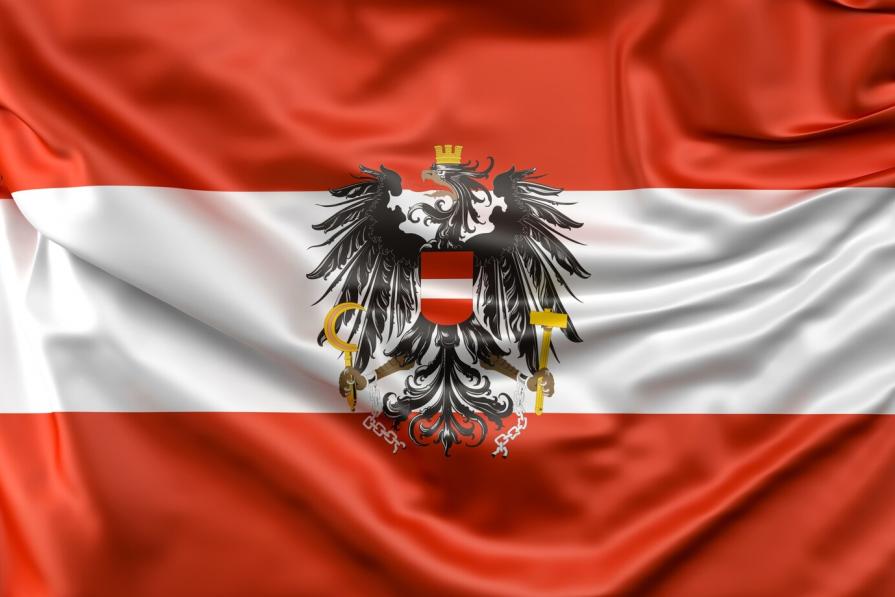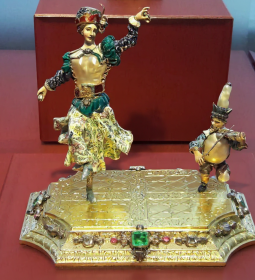The flag of Austria is one of the oldest symbols of states, still not losing relevance - despite the fact that the first cases of its use date back to 1230. Austrian colors go back to the dynastic coat of arms of the Babenbergs - and, unlike the Habsburg black-yellow, the red-white-red stripes of this family were originally attributed not only to the monarch, but also to the power that he ruled. In addition, the same banner was used as a naval flag in the Grand Duchy of Tuscany, Modena and Reggio for two centuries, while these Italian principalities were ruled by the younger branches of the House of Habsburg.
History and modernity
The colors of Austria go back to the dynastic Babenbergs – those had a silver stripe contained in a red field. The origins of the dynasty itself are not known: according to some reports, they go back to the legendary Otocar, Margrave of Styria, who, in turn, took the coat of arms from the Carinthian Duke Adalber.
The house of Appstein that preceded them became extinct at the beginning of the twelfth century. However, the Babenberg Margrave Leopold III of Austria, who is believed by some to be the ancestor of the dynasty, already in 1105 on a chronicle engraving was depicted with a three-strip shield - a triband.
After the death of the last of the Otokars, Styrian Duke Ottokar IV in 1192, the duchy was inherited in accordance with The Georgenberg Pact of 1186 by Leopold. The eighteenth-century historian claimed that his grandson, nicknamed "The Debater" or "The Warlord," developed his own version of the coat of arms as a symbol of victory over the local nobility and as a sign of opposition to the imperial power of Frederick II Barbarossa.

This period includes the first documented use of three strips – in the form of a seal on an act confirming the abbey privileges of Lihlenfeld in November 1230.
And two years later, the chronicler Jan der Einikel wrote that the Duke appeared at the ceremony in one of the Viennese monasteries in a ceremonial red-white-red suit - although now it is difficult to say what exactly was discussed.
Family Babenberg colors became the coat of arms for all their possessions. After the termination of the surname with the death in 1246 of Frederick at Leyte, they were inherited by Przemysl Ottokar, king of Bohemia and Moravia, and in 1278 by the Habsburgs.
There is a legend according to which these colors were invented by the Austrian Duke Leopold V during the siege of Acre, one of the cities in the Holy Land. After the contraction, his cloak was covered with streams of blood completely. Exposing himself, the ruler removed the belt. The fabric underneath him was clean. What he saw allegedly impressed the feudal lord so much that he ordered to depict them first on his banner, and then on the coat of arms. These events date back to 1261, although not documented.
By the way - at that time the common military banner of the Holy Roman Empire of the German nation was a silver cross on a scarlet background, reminiscent of the later coat of arms of Austria. From the end of the XIII century it was also depicted on the coat of arms of Vienna, the capital of the state.

The Treaty of Rheinfelden, which was sealed by Rudolf Habsburg in 1283, once again confirmed the use of the triband as an official one for both the state and the dynasty.
Nevertheless, for several hundred years, the national flag of the first duchy, and then the empire, was considered black and yellow. They were also inherited by the triune Austro-Hungarian monarchy until its catastrophe in 1918.
Flags of the Austrian lands
On the land flags there are several colors: red, blue, yellow and white, as well as the corresponding coats of arms dating back to the Middle Ages and the times of Habsburg rule.
All except Carinthia are bicolors, the latter has three stripes - yellow, red and white, from top to bottom. Some flags are identical – Tyrolean and Upper Austrian, Viennese and Vorahlberg, as well as Salzburg. The flag of Lower Austria is not difficult to confuse with the Ukrainian - perhaps the latter was drawn from it?











